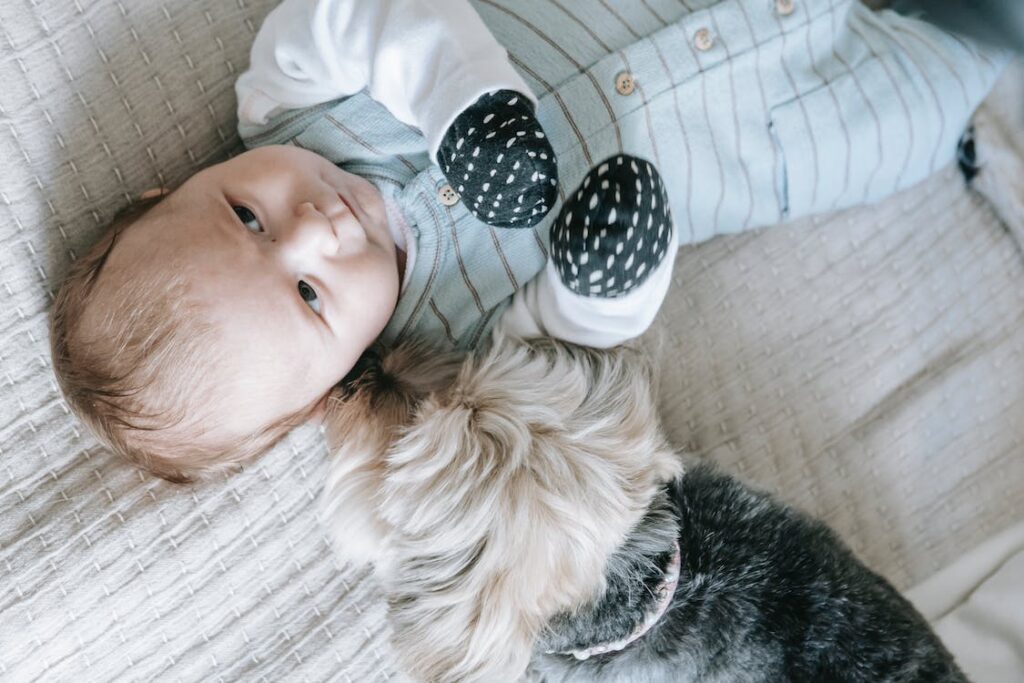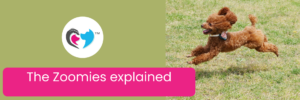You’ve just discovered that you are expecting your first child and are naturally elated. But once things calm down, you start to wonder – what about my pets? How will they cope? How do I ensure they welcome the baby and still get what they need?
Well, we are here to tell you that there are steps you can take to prepare your pets for your new arrival. With adequate preparation, all you have to do is enjoy your new-born and your pets together.
Initial Preparation
The preparation begins months before the baby’s arrival. So as soon as you get the happy news, you can start with these steps:
If you haven’t yet taken your dog for some basic training classes, now is the ideal time. Basics, like sit, down and stay, are vital. A well-behaved dog will make life that much easier during the transition period. If your dog jumps up on you, get advice on how to stop the behaviour from your trainer or behaviourist, as it could potentially be dangerous for you and the baby.
Some experts suggest that the most upsetting thing to cats and dogs about a new baby is the new sounds and smells. You can start preparing your pets by wearing baby lotion and powder on your skin and allowing your pets to see and smell all the new baby equipment, such as the stroller. Perhaps even teaching your pets new boundaries once you have decided whether they will be allowed in the nursery or not. You can also download baby sounds from the internet that you can play at a very low volume in the background.
Once your dog has had some basic training and his behaviours are reliable and on cue, visit the park or friends with children, provided your dog is socialized with children. If not, first get in touch with a qualified behaviourist. This helps to familiarise your dog with the sounds and smells of children. Start very slowly with this process – the first time, you can simply walk your dog past children playing in the park and reward him with treats for staying calm. Later you can progress this by asking parents if they would allow their children to hand-feed your dog a treat. Ensure your dog is sitting and securely leashed, and the child places the treat on their open hand so no fingers get nibbled. NOTE: This should only be done with the parent’s consent and supervision and ONLY if your dog has been taught to take treats gently and not grab them.
If you haven’t yet, start to crate-train your dog so that he has a special hiding place where he can go to get away from all the hubbub once the baby has arrived. The crate should always be a no-child zone, a safe place for your dog to get away if he feels he needs to. Read more about crate training in our article here: https://coape.org/crate-training-how-and-why/
Get the baby’s room ready as soon as possible. Moving in new furniture – not to mention the new smells – can be stressful for pets, especially cats. Give your pets time to investigate the new room and accept the new additions. Remember those treats!
The first few months after your baby is born, there will be less time to spend with your pets than usual. This is natural, but your pets won’t take kindly to a sudden change in their routine. For this reason, you should start to gradually reduce the time spent with your pets before the baby’s arrival. Invest in some brain toys and KONGS, so your dog has things to keep him occupied while you are busy. All this being said, it is important to still give your dog the attention he deserves once the baby arrives. This can be as simple as letting him lie at your feet while feeding the baby. Work to include your dog or cat where you can, rather than just ignoring him, as this could cause a lot of stress for him.
So now you’ve done all the necessary preparation with your dog or cat, and the big day has arrived: baby is here! Let’s look at that all-important first meeting and how to introduce your pets to the new addition.
Before you come home
If at all possible, have your spouse/partner bring a blanket, towel or an item of clothing from home and wrap the baby in it. You can then take this item home, allow your pet to sniff it, and become acclimatised to the baby’s scent. Try and do this as often as possible before the baby arrives home. Scent is very important to animals, and it will help your pets to realise that the baby’s scent is part of their home environment and nothing to be fearful about.
Once the doctor has given you the all-clear and you are on your way home, there are some things to keep in mind for the very first meeting:
If possible, have a friend take the dogs for a romp in the park or play with the cat before you get home so they are tired.
When you arrive home, have your partner/spouse hold the baby while you go in first and greet your pets. Remember that you’ve been away for at least 24 hours, and they will have missed you.
Your partner/spouse can then take the baby to her crib while you keep your pets distracted.
Once the baby is safely ensconced in the crib, bring your pet into the nursery (one at a time, and dogs can be kept on a lead for the first meeting). Let him investigate the room and the source of the new smell at his leisure. The crib will help keep your baby safe from an over-enthusiastic greeting while still allowing your pet to sniff her. Praise your dog or cat calmly for showing interest, tell them how brave or good they are being, and add in a lovely long (slow) rub as long as they are relaxed in the baby’s presence. If your pet becomes overly excited or stressed, calmly walk him out of the room and try again later or even the next day. Never force or hurry along an introduction.
Remember that pets do well with routine. Whatever your routine was in the months leading up to this day, it is advisable to keep that routine. That is why it is so important to scale down gradually before the baby arrives, so your pets acclimatise to the new schedule without associating it directly with the arrival of the new-born.
If the first introductions went well, you can let your pet in the room when it’s time to feed or change the baby and remember to keep praising and rewarding for any calm interest. The idea is to help your pet associate the sight, smell and sound of the baby with lots of good things and not with being scolded or ignored. For nursing times, you can even give your dog a special chew toy or stuffed toy like a KONG to enjoy next to you while you feed the baby.
As your pet dog learns that the baby means good things and shows a calm, positive interest, you can let him sniff the baby’s feet while you are holding the baby. Keep these interactions short and positive in the beginning, rewarding calm behaviour as always.
On the day
Once the doctor has given you the all clear and you are on your way home, there are some things to keep in mind for the very first meeting:
If possible, have a friend take the dogs for a romp in the park before you get home so that they are tired out.
When you arrive home, have your partner / spouse hold the baby while you go in first and greet your pets. Remember that you’ve been away for at least 24 hours and they will have missed you.
Your partner / spouse can then take the baby to her crib while you keep your pet distracted with some treats.
Once the baby is safely ensconced in the crib, bring your pet into the nursery (dogs can be kept on-lead for the first meeting). Let him investigate the room and the source of the new smell at his leisure. The crib will help keep your baby safe from an over-enthusiastic greeting, while still allowing your pet to sniff her. Remember to reward calm interest with plenty of treats. If your pet becomes overly excited or stressed, calmly walk him out of the room and try again later or even the next day. Never force or hurry along an introduction.
Remember that pets do well with routine. Whatever your routine was in the months leading up to this day, it is advisable to keep that routine. That is why it is so important to scale down gradually before baby arrives so your pets acclimatize to the new schedule without associating it directly with the arrival of the newborn.
If first introductions went well, you can let your pet in the room when it’s time to feed or change baby and remember to keep praising and rewarding for any calm interest. The idea is to help your pet associate the sight, smell and sound of the baby with lots of good things and not with being scolded or ignored. For nursing times, you can even give your dog a special chew toy or stuffed toy like a KONG to enjoy next to you while you feed the baby.
As your pet learns that the baby means good things and shows a calm, positive interest you can let him sniff the baby’s feet while you are holding the baby. Keep these interactions short and positive in the beginning, rewarding calm behaviour as always.
Some Important Notes
- NEVER leave your baby alone unsupervised with any pet. Accidents do happen!
- If your pet shows continual negative or aggressive behaviour towards the baby, enlist the help of a COAPE-qualified animal behaviourist. You can find one here: https://capbt.org or here: https://coape.org/find-a-behaviourist/.
- Keep all interactions positive as far as possible, and do not punish your pets for hissing/growling at the baby – this will only worsen their dislike of the new arrival.
- Remember to keep your pets’ routine and give them enough attention. If they are ignored when the baby arrives home, they might associate the neglect with the baby and react in an unwanted way.





